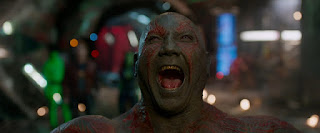Story Boards
What are story boards?
Story boards are a series of sketches that are used as a planning tool to visualise how the action of the story unfolds.
Some are detailed, while others are purely diagrammatical
which ever form they take story boards concentrate on the key frames that make up a particular scene or sequence
what are the key frames.
They are used in all forms of films and programmes, with some formats using them more than others.
no set format
Can be used at any stags of production
show the conception, can help sell the idea, far cheaper than making a pilot or shooting footage
Pre production - enable the planning of the entire production, each department such as sound, prod design camera will use a story board to work out what is required to deliver the production.
Production - can be used as a guide to setting up the shots on the day.
Print a mini script A5
some productions use the story boards as the first point of reference often before the script. other productions will use the story board only as a rough guide or back up.
not all shows use story boards, some use a script and a shot list.
Post production, story boards can be used in the editing phase to help the editor visualise how the director intended a scene or sequence to be constructed.
be adaptable, the story board isn't the law.
pre visuals are becoming very popular in special effects based film
https://www.studiobinder.com/blog/top-10-storyboard-software-of-2016-free-storyboard-templates/
3 main styles
Graphic - the most detailed version of storyboard and will always be used in action dependent films.
Diagrammatical - These types are widely used, less artistic they still give detailed information about the design of a shot.
Plan View - not showing the view, usually where the camera and scene layout will be..
Shot descriptions - The main descriptive purpose of a storyboard is to design the shot and frame size, to do this successfully you need to use the industry standard terminology
Taxi Driver
Birds Eye View or an Angel Perspective - good to use as an establishing shot BEV
Extreme Long Shot - ELS
Long Shot or Wide Shot LS/WS
Medium Shot - MS
Close Up Shot - CU
Extreme Close Up - ECU
Camera movements
Tilt Shot - tilts up or down.
Crane Shot - Camera moves down from a fixed position without losing depth of frame.
Pan Shot - moving left to right or right to left.
Tracking Shot - camera moves in parallel with the character or the subject.
Dolly Shot - the camera moves in or away from a subject or a character.
Camera Position
Two shot - a shot with two characters appearing in frame.
Low angle - camera is below looking up at the subject, gives the character a sense of power.
High Angle - Camera is placed above looking down on the subject, makes the character seem smaller and weaker less dominant.
Greg Tolland
Over the shoulder - OTS the camera is positioned over the characters shoulder, looking at another character or view, the amount of should in the frame varies usually denotes trapped feelings.
Steady Cam, first used in the early 1970's is now a shot that is widely employed and can combine all of the types of shots described previously in one single amazing shot.
Trailers
Designed to hook the audience into watching a specific film or programme.
trailer will condense a few key moments, making it the visual pitch for the idea,story.
first used in cinema, shown after the film, i.e they trailed.
usually made of the most exciting, dramatic or comedic or shocking moments in the film/programme and edited together with music and other elements such as voice over and text.
some trailers are shot specially.
TV Trailers - BBC often make a trailer that has no relation to the style of the programme.
What is the story?
When is it on?
Who is it aimed at?
Our project - Make a 1-2 minute trailer for soft.
Think about the scenes, key moments that sell the story.
Edit and upload to my journal.



















